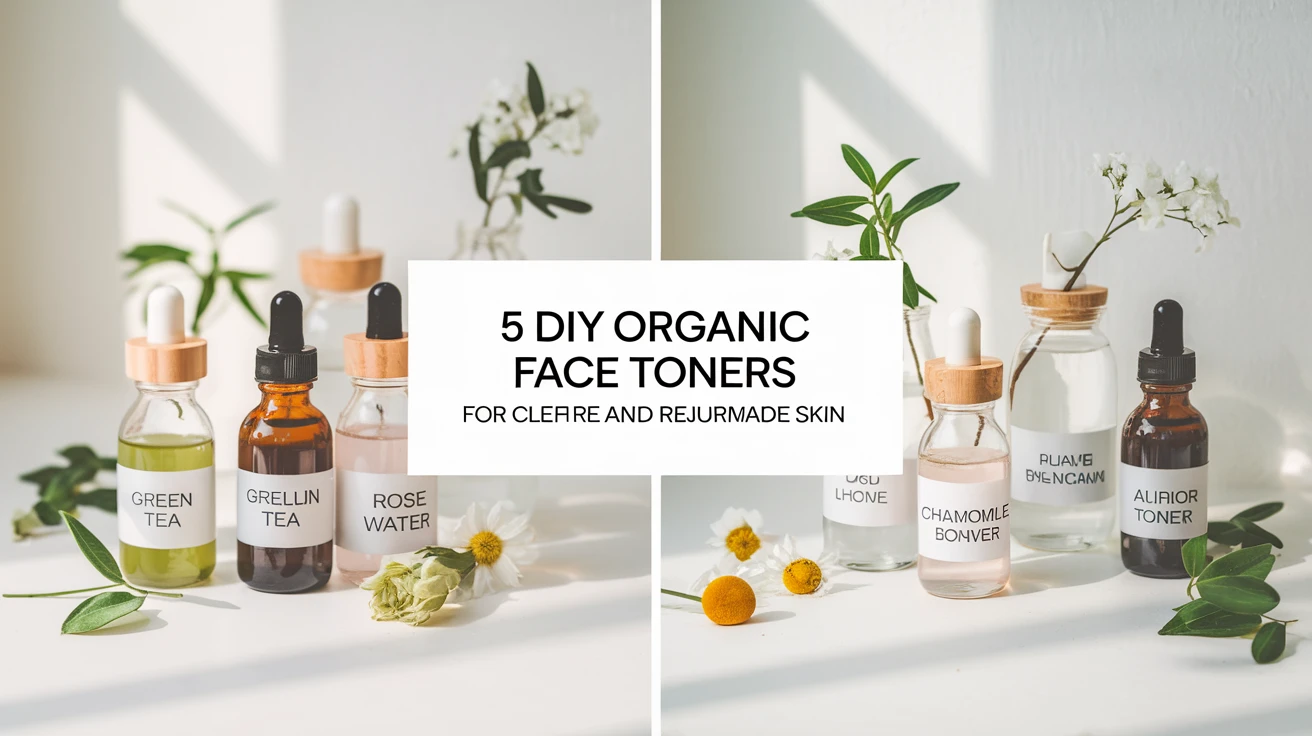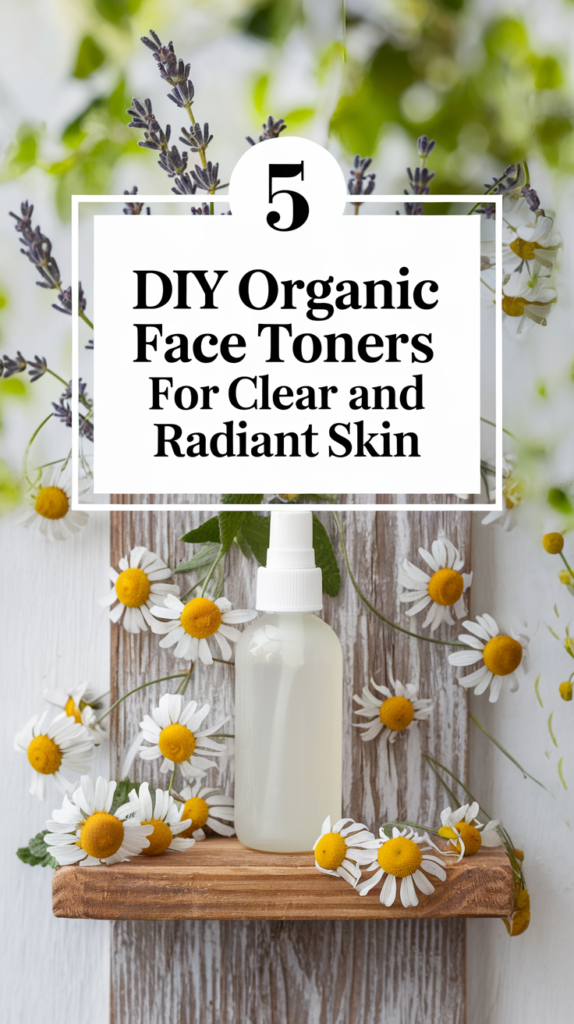
Are you tired of spending a fortune on commercial toners filled with mysterious ingredients you can’t pronounce? I was too, until I discovered the transformative power of DIY organic toners. After years of battling sensitive skin and experiencing reactions to store-bought products, I decided to take matters into my own hands – literally. Making your own facial toner isn’t just budget-friendly; it’s a wonderful way to ensure you know exactly what you’re putting on your skin. In this comprehensive guide, I’ll share five of my tried-and-tested DIY organic toner recipes that have helped me achieve clear, radiant skin naturally.
Why Choose DIY Organic Toners?
Before we dive into the recipes, let’s understand why making your own toner is worth the effort. As someone who’s experienced both commercial and homemade toners, I can confidently share the benefits I’ve observed:
- Cost-effective: Make months’ worth of toner for the price of one commercial bottle
- Pure ingredients: Complete control over what goes on your skin
- Customizable: Adjust ingredients based on your skin’s needs
- Environmentally friendly: Reduce plastic waste from packaging
- Fresh and preservative-free: No artificial preservatives needed
| Commercial Toners | DIY Organic Toners |
|---|---|
| Contains preservatives | Fresh, natural ingredients |
| Average cost: $20-40 | Average cost: $3-5 per batch |
| 6-12 month shelf life | 2-4 week shelf life (fresher) |
| Pre-determined formula | Customizable ingredients |
1. Green Tea and Apple Cider Vinegar Toner
This was my first venture into DIY toners, and it remains a favorite. The combination of antioxidant-rich green tea and balancing apple cider vinegar creates a powerful yet gentle toner perfect for combination skin.
Ingredients:
- 1 cup strong-brewed organic green tea (cooled)
- 2 tablespoons raw apple cider vinegar (with “mother”)
- 1 teaspoon honey
- 3 drops of tea tree oil (optional)
Instructions:
1. Brew green tea and let it cool completely
2. Mix in apple cider vinegar and honey until dissolved
3. Add tea tree oil if using
4. Store in a dark glass bottle in the refrigerator
Shelf life: 1-2 weeks when refrigerated
Benefits and Uses
| Ingredient | Skin Benefits |
|---|---|
| Green Tea | Antioxidant protection, reduces inflammation |
| Apple Cider Vinegar | Balances pH, fights acne-causing bacteria |
| Honey | Antibacterial, moisturizing properties |
2. Rose Water and Witch Hazel Toner
This elegant combination is perfect for sensitive skin. I discovered this blend during a particularly stressful period when my skin needed extra soothing.
Ingredients:
- 1/2 cup organic rose water
- 1/4 cup witch hazel (alcohol-free)
- 1 tablespoon aloe vera gel
- 2 drops geranium essential oil (optional)
Instructions:
1. Combine all ingredients in a clean glass bottle
2. Shake gently to mix
3. Store in a cool, dark place
Skin Type Compatibility
| Skin Type | Benefits |
|---|---|
| Sensitive | Reduces redness and inflammation |
| Dry | Provides hydration and moisture balance |
| Mature | Offers antioxidant protection |
3. Chamomile and Lavender Calming Toner
Perfect for evening use, this gentle toner helps prepare your skin for rest while promoting cellular repair.
Ingredients:
- 1 cup strong-brewed chamomile tea (cooled)
- 2 tablespoons lavender hydrosol
- 1 teaspoon vegetable glycerin
- 2 drops lavender essential oil
Instructions:
1. Brew chamomile tea and allow to cool completely
2. Mix in remaining ingredients
3. Transfer to a dark glass spray bottle
4. Store in the refrigerator
Storage tip: This toner can last up to 2 weeks when properly refrigerated.
4. Aloe Vera and Cucumber Refreshing Toner
This cooling toner is my go-to during summer months. It’s incredibly refreshing and helps maintain skin hydration.
Ingredients:
- 1/2 cucumber, pureed and strained
- 1/4 cup pure aloe vera gel
- 2 tablespoons distilled water
- 1 vitamin E capsule (as a natural preservative)
Instructions:
1. Blend cucumber until smooth and strain through cheesecloth
2. Mix with remaining ingredients
3. Store in a spray bottle in the refrigerator
5. Tea Tree and Thyme Clarifying Toner
This powerful combination is perfect for acne-prone skin. I developed this recipe during a particularly challenging breakout period.
Ingredients:
- 1 cup thyme tea (cooled)
- 2 tablespoons witch hazel
- 5 drops tea tree oil
- 1 teaspoon raw honey
Instructions:
1. Steep thyme in hot water for 10 minutes, cool completely
2. Mix in remaining ingredients
3. Store in a dark glass bottle
Conclusion
Creating your own organic toners is a rewarding journey toward healthier skin. Through my personal experience, I’ve found that these DIY solutions not only save money but also provide better results than many commercial products. Remember to always patch test new ingredients and adjust recipes to suit your skin’s needs. Start with one recipe and observe how your skin responds before trying others.
Key Takeaways
- Always use clean, sterilized containers for your DIY toners
- Store toners in dark glass bottles to preserve their properties
- Refrigerate most recipes to extend shelf life
- Perform patch tests before full application
- Replace toners every 1-2 weeks to ensure freshness
Frequently Asked Questions
How long do DIY organic toners last?
Most DIY toners last 1-2 weeks when refrigerated. Without preservation, it’s best to make small batches and use them fresh.
Can I use these toners twice daily?
Yes, most organic toners are gentle enough for twice-daily use, but always monitor your skin’s response.
What’s the best way to apply DIY toners?
Use a clean cotton pad or spray bottle to apply toner after cleansing and before moisturizing.
Should I refrigerate my DIY toners?
Yes, refrigeration helps preserve the natural ingredients and extends shelf life.
Can I customize these recipes for my skin type?
Absolutely! Feel free to adjust ingredients based on your skin’s needs and sensitivity.
What if my skin reacts to a DIY toner?
Discontinue use immediately and perform a patch test with individual ingredients to identify the trigger.
Can I use essential oils in my toner?
Yes, but use them sparingly (1-3 drops per recipe) and ensure they’re skin-safe and properly diluted.
Is it normal for the color or smell to change over time?
Some natural changes are normal, but significant changes in color, smell, or texture indicate it’s time to make a fresh batch.
Can I make larger batches to save time?
It’s better to make smaller batches to ensure freshness, as natural preservatives have limited effectiveness.
What’s the best time to apply these toners?
Apply immediately after cleansing while skin is still slightly damp for optimal absorption.


